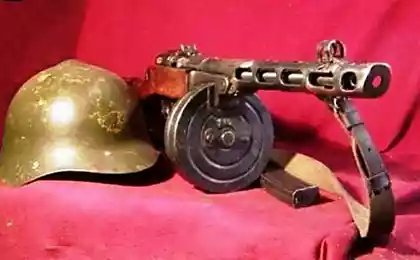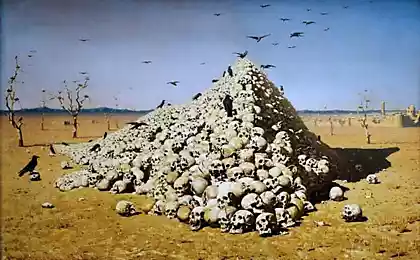739
Home chemical warfare
Fritz Haber was born on 9 December 1868. in Breslau (Germany), the son of a wealthy Jewish merchant dyes and chemicals Siegfried Haber. His father founded the company, which made these chemicals, gave him a lot of effort and attention to others, and was an example of self-discipline and responsibility. These traits are fully succeeded by his son. Fritz attended public school and humanitarian gymnasium in Breslau. In 1886-1887 gg. He studied chemistry at the universities of Berlin and Heidelberg. His studies were interrupted by military conscription. In 1889 he returned to Berlin, where he continued his education at the Higher Technical School (Berlin-Charlottenburg). In 1891. Haber led K.T.Libermana thesis on Piperonal the University of Berlin and became a doctor of philosophy.
Father of chemical warfare professor chemist Fritz Haber (1868-1934) personally directed the first gas attack, and later in 1918 he was awarded the Nobel Prize winner for reception in 1908 of liquid ammonia from nitrogen and hydrogen to osmium catalyst, in 1932 he was awarded the honorary member of the USSR Academy of Sciences. Throughout his life he worked for the glory and for the benefit of Germany. Hitler "rewarded" him his due: in 1933 he began to pursue his Jewish origins. He was forced to emigrate to England, where he worked in Cambridge. He died in 1934 from a heart attack while he was on holiday in Switzerland.
This man started the race and chemical weapons.

First, very effective use of chemical weapons on a large scale was taken by the Germans April 22, 1915 north of Ypres (hence the name of the gas) in Belgium. This chemical is usually in the fall, it is considered the beginning of chemical warfare in the modern sense.
Dobavleno1 in [mergetime] 1252340809 [/ mergetime]
April 14, 1915 near the village of Langemark, near the little-known at the time the Belgian city of Ypres French division captured a German soldier. During the search he found a small gauze bag filled with rags same cotton fabric, and a bottle of colorless liquid. It was so similar to the package of dressing that it simply did not initially notice. Apparently his appointment would have remained unknown if a prisoner under interrogation has not stated that the bag - special means of protection against new "devastating" weapon, which the German Command plans to apply in this sector.
On the question of the nature of these weapons, the prisoner willingly replied that the concept of it has not, but it seems to be a weapon hidden in a metal cylinder, which dug into no man's land between the lines of trenches. To protect against these weapons need to wet the flap of her purse liquid from the bottle and attach it to his mouth and nose.
French Gentlemen considered nonsense story captive soldier gone mad and gave it value.
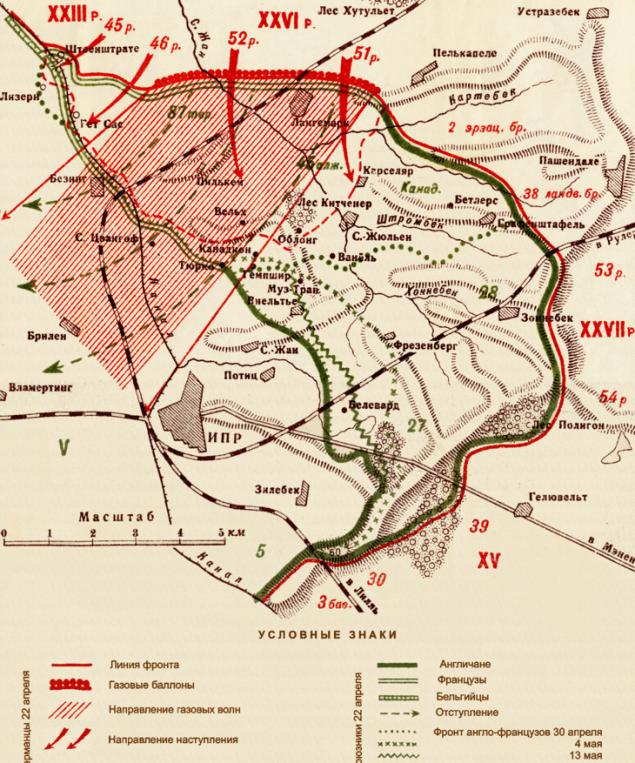
Balon buried in the ground. The release of the contents of thousands of bottles directly allowed to create vast clouds of gas were distributed under favorable weather conditions for tens of kilometers ...
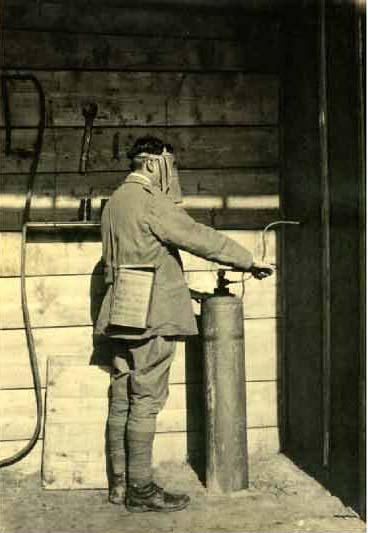
...
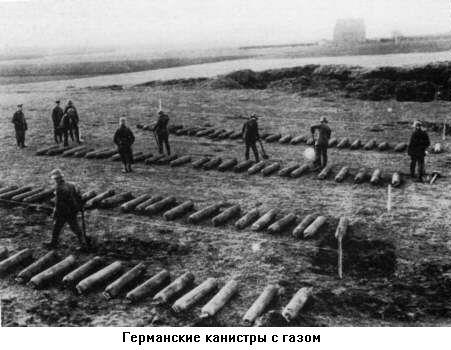
Greenish-yellow cloud of chlorine was released on the evening of cylindrical tanks, installed at the forefront of the German position on the front length of about 8 km between settlements and Bikshute Langemark.
The effect was stunning. For this reason, none of Allied soldiers did not have any protection against the harmful effect of OM. As a result, the first LPG attack on the Western Front, April 22, 1915 was poisoned by 15 thousand persons. Out of them killed 5 thousand.

...

...

May 31, 1915 the Germans carried out the first gas balloon attack on the Eastern Front in the area have Bolimova Will Shidlovskaya.
The Germans established 12 thousand. Cylinders with chlorine in the advanced trenches for 12 km, and within ten days of favorable weather conditions expected. The attack began at 3:00. 20 minutes. On 31 May. The Germans released chlorine, revealing at the same time a hurricane artillery, machine gun and rifle fire on Russian positions. A complete surprise and unprepared enemy action on the part of Russian troops led to the fact that the soldiers were curious and surprised more than when there was a cloud of chlorine than apprehensive. By adopting a cloud of greenish camouflage attack, Russian troops advanced reinforced trenches and pulled part of the support. Soon the trenches, here representing a maze of continuous lines, have appeared in places filled with corpses and dying people. By 4.30 chlorine penetrated 12 kilometers into the Russian defense forces, formed in depressions "swamp gas" .Poteri Russian parts of the gas attack were huge poisoned 9138 and 1183 dead.
On a photo Russian field hospital after a gas attack.

...
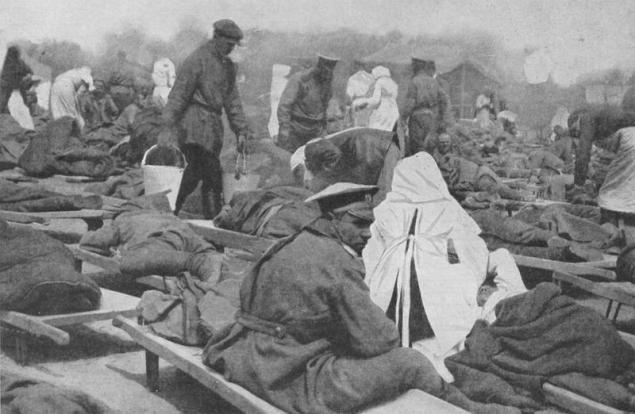
Start of the race of chemical weapons.
Following Germany used poison gas and the troops of the Entente.
In 1915, British forces held their first attack with chlorine, and later in further attacks compressed gas used as chlorine and chlorine mixture with phosgene.
Improve and the means of delivery of OM in the target area. Rather inconvenient cylinders appeared GAZOMET resembling modern mortars. The mines contain 9-28 kg agents. When firing position was created as a high concentration of OB that mask did not have any protective action. In 1916 Germany was first used chemical artillery shells. The efficiency of gas attacks increases several times.

...

...

...

Of all OB applied during the First World War, the most effective was the mustard Germans called him "the king of gas." This toxic substance used in the drip-liquid or vapor state, provided damaging effect not only on the eyes and lungs, and skin. To solve the problem of protection of the skin from the effects of mustard gas proved to be very difficult.

...

...

...

...
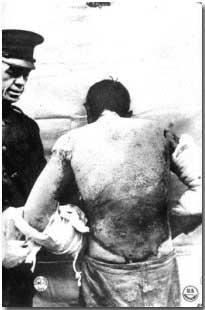
...
Dobavleno1 in [mergetime] 1252341368 [/ mergetime]
During the First World War, the chemicals used in large quantities: 12 000 tonnes of mustard gas, which was hit by about 400 thousand people, and all different substances 113,000 tons. All the years of the First World was produced 180 thousand. Tons of toxic substances. Total losses from chemical weapons is estimated at 1, 3 million. People, including up to 100,000 fatalities, many more incurable diseases.

Source:
Father of chemical warfare professor chemist Fritz Haber (1868-1934) personally directed the first gas attack, and later in 1918 he was awarded the Nobel Prize winner for reception in 1908 of liquid ammonia from nitrogen and hydrogen to osmium catalyst, in 1932 he was awarded the honorary member of the USSR Academy of Sciences. Throughout his life he worked for the glory and for the benefit of Germany. Hitler "rewarded" him his due: in 1933 he began to pursue his Jewish origins. He was forced to emigrate to England, where he worked in Cambridge. He died in 1934 from a heart attack while he was on holiday in Switzerland.
This man started the race and chemical weapons.

First, very effective use of chemical weapons on a large scale was taken by the Germans April 22, 1915 north of Ypres (hence the name of the gas) in Belgium. This chemical is usually in the fall, it is considered the beginning of chemical warfare in the modern sense.
Dobavleno1 in [mergetime] 1252340809 [/ mergetime]
April 14, 1915 near the village of Langemark, near the little-known at the time the Belgian city of Ypres French division captured a German soldier. During the search he found a small gauze bag filled with rags same cotton fabric, and a bottle of colorless liquid. It was so similar to the package of dressing that it simply did not initially notice. Apparently his appointment would have remained unknown if a prisoner under interrogation has not stated that the bag - special means of protection against new "devastating" weapon, which the German Command plans to apply in this sector.
On the question of the nature of these weapons, the prisoner willingly replied that the concept of it has not, but it seems to be a weapon hidden in a metal cylinder, which dug into no man's land between the lines of trenches. To protect against these weapons need to wet the flap of her purse liquid from the bottle and attach it to his mouth and nose.
French Gentlemen considered nonsense story captive soldier gone mad and gave it value.

Balon buried in the ground. The release of the contents of thousands of bottles directly allowed to create vast clouds of gas were distributed under favorable weather conditions for tens of kilometers ...

...

Greenish-yellow cloud of chlorine was released on the evening of cylindrical tanks, installed at the forefront of the German position on the front length of about 8 km between settlements and Bikshute Langemark.
The effect was stunning. For this reason, none of Allied soldiers did not have any protection against the harmful effect of OM. As a result, the first LPG attack on the Western Front, April 22, 1915 was poisoned by 15 thousand persons. Out of them killed 5 thousand.

...

...

May 31, 1915 the Germans carried out the first gas balloon attack on the Eastern Front in the area have Bolimova Will Shidlovskaya.
The Germans established 12 thousand. Cylinders with chlorine in the advanced trenches for 12 km, and within ten days of favorable weather conditions expected. The attack began at 3:00. 20 minutes. On 31 May. The Germans released chlorine, revealing at the same time a hurricane artillery, machine gun and rifle fire on Russian positions. A complete surprise and unprepared enemy action on the part of Russian troops led to the fact that the soldiers were curious and surprised more than when there was a cloud of chlorine than apprehensive. By adopting a cloud of greenish camouflage attack, Russian troops advanced reinforced trenches and pulled part of the support. Soon the trenches, here representing a maze of continuous lines, have appeared in places filled with corpses and dying people. By 4.30 chlorine penetrated 12 kilometers into the Russian defense forces, formed in depressions "swamp gas" .Poteri Russian parts of the gas attack were huge poisoned 9138 and 1183 dead.
On a photo Russian field hospital after a gas attack.

...

Start of the race of chemical weapons.
Following Germany used poison gas and the troops of the Entente.
In 1915, British forces held their first attack with chlorine, and later in further attacks compressed gas used as chlorine and chlorine mixture with phosgene.
Improve and the means of delivery of OM in the target area. Rather inconvenient cylinders appeared GAZOMET resembling modern mortars. The mines contain 9-28 kg agents. When firing position was created as a high concentration of OB that mask did not have any protective action. In 1916 Germany was first used chemical artillery shells. The efficiency of gas attacks increases several times.

...

...

...

Of all OB applied during the First World War, the most effective was the mustard Germans called him "the king of gas." This toxic substance used in the drip-liquid or vapor state, provided damaging effect not only on the eyes and lungs, and skin. To solve the problem of protection of the skin from the effects of mustard gas proved to be very difficult.

...

...

...

...

...
Dobavleno1 in [mergetime] 1252341368 [/ mergetime]
During the First World War, the chemicals used in large quantities: 12 000 tonnes of mustard gas, which was hit by about 400 thousand people, and all different substances 113,000 tons. All the years of the First World was produced 180 thousand. Tons of toxic substances. Total losses from chemical weapons is estimated at 1, 3 million. People, including up to 100,000 fatalities, many more incurable diseases.

Source:










